Input interpretation

(S)-(+)-2-butanol
Chemical names and formulas
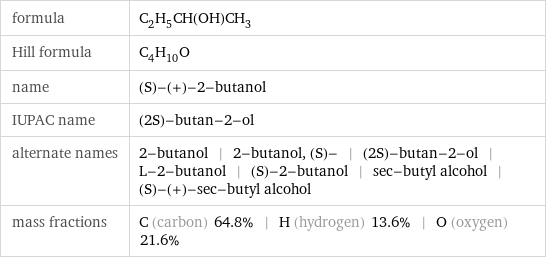
formula | C_2H_5CH(OH)CH_3 Hill formula | C_4H_10O name | (S)-(+)-2-butanol IUPAC name | (2S)-butan-2-ol alternate names | 2-butanol | 2-butanol, (S)- | (2S)-butan-2-ol | L-2-butanol | (S)-2-butanol | sec-butyl alcohol | (S)-(+)-sec-butyl alcohol mass fractions | C (carbon) 64.8% | H (hydrogen) 13.6% | O (oxygen) 21.6%
Lewis structure
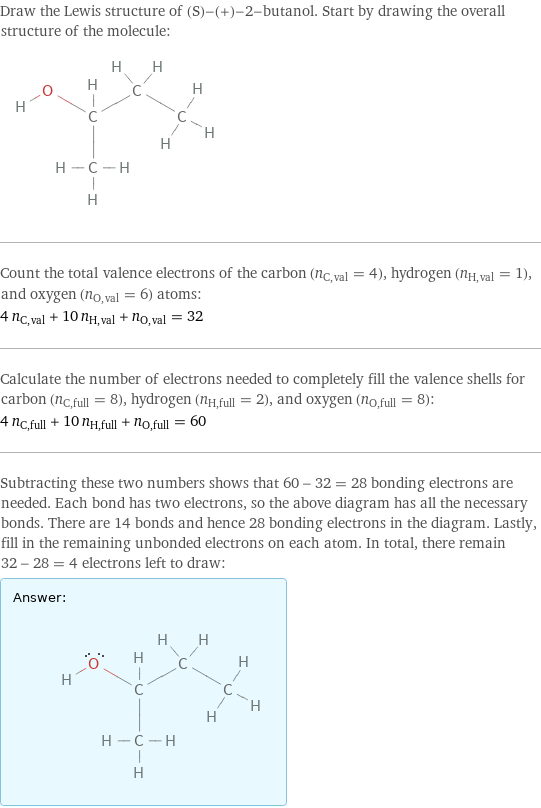
Draw the Lewis structure of (S)-(+)-2-butanol. Start by drawing the overall structure of the molecule: Count the total valence electrons of the carbon (n_C, val = 4), hydrogen (n_H, val = 1), and oxygen (n_O, val = 6) atoms: 4 n_C, val + 10 n_H, val + n_O, val = 32 Calculate the number of electrons needed to completely fill the valence shells for carbon (n_C, full = 8), hydrogen (n_H, full = 2), and oxygen (n_O, full = 8): 4 n_C, full + 10 n_H, full + n_O, full = 60 Subtracting these two numbers shows that 60 - 32 = 28 bonding electrons are needed. Each bond has two electrons, so the above diagram has all the necessary bonds. There are 14 bonds and hence 28 bonding electrons in the diagram. Lastly, fill in the remaining unbonded electrons on each atom. In total, there remain 32 - 28 = 4 electrons left to draw: Answer: | |
3D structure
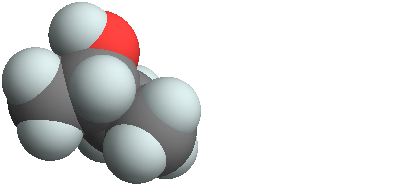
3D structure
Basic properties
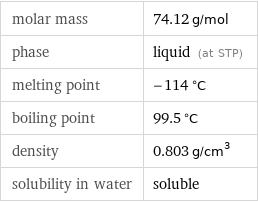
molar mass | 74.12 g/mol phase | liquid (at STP) melting point | -114 °C boiling point | 99.5 °C density | 0.803 g/cm^3 solubility in water | soluble
Units

Liquid properties (at STP)
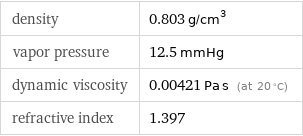
density | 0.803 g/cm^3 vapor pressure | 12.5 mmHg dynamic viscosity | 0.00421 Pa s (at 20 °C) refractive index | 1.397
Units

Chemical identifiers
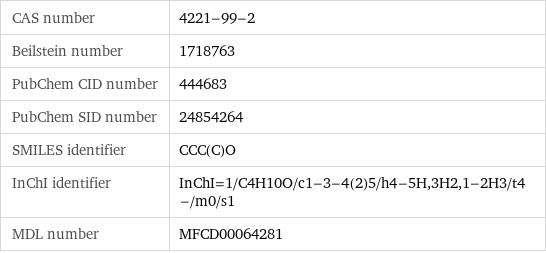
CAS number | 4221-99-2 Beilstein number | 1718763 PubChem CID number | 444683 PubChem SID number | 24854264 SMILES identifier | CCC(C)O InChI identifier | InChI=1/C4H10O/c1-3-4(2)5/h4-5H, 3H2, 1-2H3/t4-/m0/s1 MDL number | MFCD00064281
NFPA label

NFPA label
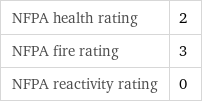
NFPA health rating | 2 NFPA fire rating | 3 NFPA reactivity rating | 0
Safety properties

flash point | 26.67 °C autoignition point | 390 °C

DOT hazard class | 3 DOT numbers | 1120